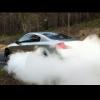What Afratio Is Safe To Run?
Announcements
-
Similar Content
-
Latest Posts
-
I’d love to find some where that can recover the dashes to look brand new and original. Mine has a very slight bubble, nothing compared to some I’ve seen though
-
$170K. I asked one of the guys there as a joke if that price was just for the passenger seat as it was where the price sheet was... he tried really hard to crack a smile 😄 He also mentioned that every single part of the car was inspected and either restored or replaced with a new or as new part, or made from scratch. The interior was incredible, every inch like a new car.
-
By Dose Pipe Sutututu · Posted
Time for a modernisation, throw out the AFM, stock O2s, ECU into the e-waste bin. Rip out the cable throttle, IACV, pedal, etc. into the scrap metal bin. DBW, e-throttle, modern ECU, CANbus wideband, and the thing will drive better than when it left the factory. -
I agree, don't go trusting those trims. As I said, first step is to put the logger away, and do the basics in diagnosis. I spend plenty of time with data loggers. I also spend plenty of time teaching "technicians" why they need to stop using their data loggers, and learn real diagnostics. The amount of data logs I play with would probably blow most people away. I don't just use it to diagnose. I log raw CAN data too, as a nice chunk of my job is reverse engineering what automotive manufacturers are doing.
-
By joshuaho96 · Posted
I'm aware, but unless you're actually seeing the voltage the ECU is seeing and you're able to verify the sensors are actually working I find it hard to just trust STFT/LTFT. I will say, logging the ECU comes naturally to me because it's one of the lowest effort methods of diagnosis and I do similar things in my day job all the time. Staring at 20+ charts looking for something that isn't quite right isn't for everyone. NDS1 allows you to log almost everything so that's normally what I do and then sort out the data later.
-








Recommended Posts
Create an account or sign in to comment
You need to be a member in order to leave a comment
Create an account
Sign up for a new account in our community. It's easy!
Register a new accountSign in
Already have an account? Sign in here.
Sign In Now